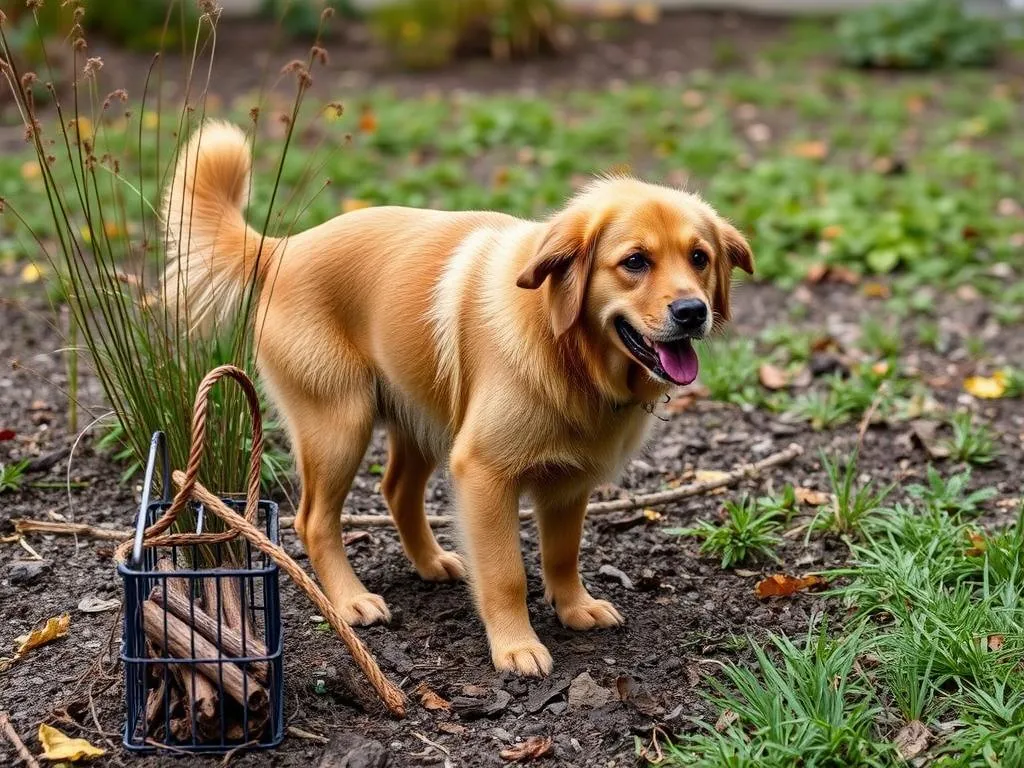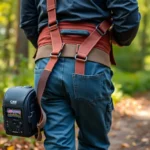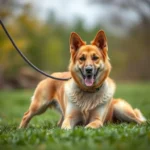
Introduction
Dogs are known as man’s best friend, but they can also be a source of frustration for pet owners, especially when it comes to their bathroom habits. One common issue many pet owners face is how to stop dogs from pooping in the garden. This behavior not only disrupts the aesthetics of our green spaces but also raises hygiene concerns. A well-maintained garden is a source of pride for many, and when a beloved pet treats it as their personal restroom, it can lead to significant stress.
Proper training is essential in managing this behavior effectively. The following sections will delve into the reasons behind this issue, practical solutions, and tips for creating a harmonious living environment for both you and your four-legged friend.
Understanding Dog Behavior
Why Dogs Poop in Gardens
To effectively address the problem of dogs pooping in the garden, it’s crucial to understand the reasons behind this behavior. Dogs are naturally inclined to mark their territory, and outdoor spaces often serve as ideal locations for them to do so. Gardens, with their rich smells and varied textures, can be particularly appealing to dogs.
Additionally, many dogs feel a strong urge to relieve themselves in open spaces, where they can easily access the grass and soil. This instinctive behavior is a blend of natural urges and learned habits, making it important for pet owners to recognize the underlying motivations.
Signs Your Dog May Be Pooping in the Garden
Recognizing the signs that your dog needs to relieve themselves is key to preventing unwanted pooping in the garden. Watch for behaviors such as sniffing around, circling, or whining. These actions often indicate that your dog is searching for the right spot to go.
Additionally, certain triggers may lead to garden pooping, such as excitement during playtime or anxiety when encountering new stimuli. Observing and understanding your dog’s body language can help you intervene before they choose your garden as their bathroom.
Practical Solutions
Establishing a Designated Bathroom Area
Choosing the Right Spot
One of the most effective strategies for how to stop dogs from pooping in the garden is to establish a designated bathroom area for your dog. When selecting this spot, consider factors such as accessibility, privacy, and comfort. A secluded area away from high traffic zones can make your dog feel more secure when they go potty.
Introducing the Designated Area
Once you have chosen the right location, it’s essential to encourage your dog to use this area. Begin by taking your dog to the designated spot consistently, especially after meals or playtime. Use positive reinforcement techniques, such as treats and praise, to reward your dog when they use the designated area. This will help them associate the spot with positive experiences, making it more likely they will return there in the future.
Training Techniques
Basic Commands and Training
Basic training commands can play a significant role in managing your dog’s bathroom habits. Teaching commands like “go potty” or “outside” can create a clear expectation for your dog. Ensure that you are consistent with these commands and use them every time you take your dog out for bathroom breaks.
Establishing a routine is also crucial. Dogs thrive on consistency, so try to take them out at the same times each day. This predictability can help them understand when and where they are supposed to relieve themselves.
Using Crates and Leashes
Crate training can be an effective method for managing your dog’s bathroom habits. Dogs naturally avoid soiling their sleeping areas, so a crate can help them develop control over their urges. Be sure to introduce the crate gradually, using positive reinforcement to create a comfortable environment for your dog.
Leash training is another valuable tool. By controlling your dog’s movements, you can direct them to the designated bathroom area. If you notice signs that your dog needs to go, gently guide them to the spot using a calm and encouraging tone.
Positive Reinforcement
Reward Systems
Positive reinforcement is one of the most effective training techniques available. When your dog successfully uses the designated bathroom area, reward them immediately with treats, praise, or playtime. Timing is crucial; the reward should be given right after they perform the desired behavior to reinforce the learning process.
Building a Routine
Establishing a consistent bathroom schedule can also be beneficial in preventing dogs from pooping in the garden. Regular walks, play sessions, and scheduled bathroom breaks will help your dog learn when and where they should go. Over time, this routine can significantly reduce accidents in the garden.
Deterrent Measures
Natural Deterrents
If your dog continues to see the garden as a bathroom, consider using natural deterrents. Certain scents, such as citrus or vinegar, can repel dogs from specific areas. You can create a solution using water and lemon juice to spray around the garden. This eco-friendly option will help protect your garden without harming your pet.
Physical Barriers
Creating physical barriers can also be a viable solution. Installing fences or gates can restrict your dog’s access to the garden, minimizing the chances of unwanted pooping. Additionally, creating boundaries within your yard—using plants or decorative stones—can help delineate areas where your dog should not go.
Addressing Underlying Issues
Health Check for Your Dog
If your dog continues to poop in the garden despite your training efforts, it may be time for a health check. Certain medical conditions, such as gastrointestinal issues or urinary tract infections, can lead to inappropriate bathroom habits. Consulting a veterinarian is crucial to rule out any underlying health concerns that may be contributing to this behavior.
Behavioral Issues
Sometimes, the reason behind your dog’s garden pooping may be behavioral. Dogs can experience stress or anxiety that leads them to seek out certain areas for relief. Identifying triggers—such as loud noises, new visitors, or changes in routine—can help you address the root cause of the behavior. Techniques such as desensitization and counter-conditioning can be effective in managing anxiety-related issues.
Tips for Maintaining a Poop-Free Garden
Regular Garden Maintenance
Keeping your garden clean is essential for discouraging dogs from pooping in the area. Promptly cleaning up after your dog can help prevent them from returning to the same spot. Additionally, maintaining a tidy garden environment will make it less appealing for your dog to see it as a bathroom.
Engaging Your Dog
Keeping your dog mentally and physically stimulated can significantly reduce their urge to wander into the garden. Engaging in regular play sessions, providing toys, and incorporating training exercises can help keep your dog occupied. Daily walks and outdoor activities will not only promote good bathroom habits but also contribute to your dog’s overall well-being.
Conclusion
Preventing dogs from pooping in the garden is a challenge many pet owners face, but with patience and consistent training, it can be managed effectively. By understanding your dog’s behavior, establishing designated bathroom areas, and utilizing positive reinforcement techniques, you can create a harmonious environment for both you and your furry friend. Remember, success takes time, and maintaining a routine will help solidify these new habits.
Encouragement and love will go a long way in building a strong bond with your dog. With the right approach, you can enjoy a beautiful garden while ensuring your pet knows where it’s appropriate to relieve themselves.
By implementing these strategies, you’ll not only address the immediate issue of how to stop dogs from pooping in the garden, but you’ll also foster a deeper understanding and connection with your canine companion.









